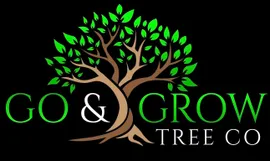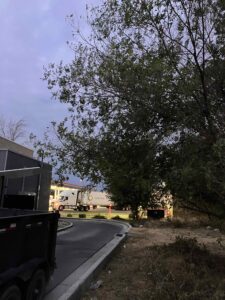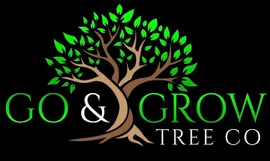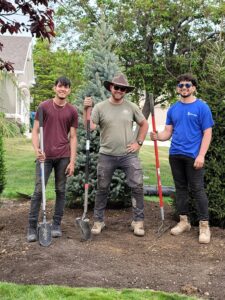Jan 17, 2024
Are you looking to give your orchard the care it deserves? Look no further than the art of fruit tree trimming, a crucial practice for any fruit tree owner. In this article, we delve deep into the world of fruit tree trimming services, offering you expert advice straight from the professionals. Whether you’re a seasoned orchardist or a beginner, these tips will help you understand the ins and outs of effective fruit tree maintenance. So, let’s embark on this journey to unlock the full potential of your fruit-bearing friends.
Understanding Fruit Tree Trimming
What exactly is fruit tree trimming? It’s more than just cutting branches; it’s a science and an art. Professional fruit tree trimming services focus on removing unnecessary branches to improve a tree’s structure, enhance sunlight penetration, and promote the growth of healthy fruit. The timing of this process varies with different fruit tree species. For example, apple trees are best pruned in late winter, while peach trees prefer the early spring. It’s a common myth that trimming is always harmful to trees, but in reality, when done correctly, it can significantly boost the health and yield of your fruit trees.
Essential Tools for Fruit Tree Trimming
Before diving into the trimming process, it’s important to gear up with the right tools. Professional fruit tree trimming services use a variety of tools, from pruning shears to loppers and saws. Each tool has a specific purpose; for instance, shears are perfect for small branches, while saws handle the thicker ones. Investing in high-quality tools not only makes the job easier but also ensures a cleaner cut, which is crucial for the tree’s health. Remember, keeping these tools clean and sharp is as important as using them correctly.
Techniques Used by Professionals
Professional fruit tree trimming services use a variety of specialized techniques tailored to the specific needs of each tree species. One common method is thinning, which involves removing select branches to improve light penetration and air circulation within the tree’s canopy. This technique is particularly beneficial for trees that have become overly dense, as it helps to reduce the risk of disease and promotes the development of stronger, healthier branches. Another technique frequently used by professionals is called heading back. This involves cutting back the tips of branches to encourage the growth of new fruiting wood. It’s a delicate balance, as over-pruning can stress the tree and reduce fruit yield, so professionals are careful to remove just the right amount.
Professionals also pay close attention to the structural pruning of young trees, shaping them in their formative years to promote a strong, balanced framework that will support fruit production in the future. This might involve selecting a central leader (the main upward-growing branch) or establishing a desired shape, such as an open center or a modified leader system, depending on the tree type. For example, apple trees often benefit from a central leader structure, while stone fruit trees like peaches and plums may be shaped with an open center to allow light into the middle of the tree.
Moreover, professionals are skilled in rejuvenation pruning, a technique used on older or neglected trees that have become unproductive. This involves more drastic cutting back to stimulate new growth, but it must be done carefully to avoid shocking the tree. Skilled arborists know how to assess the condition of the tree and determine the best approach for rejuvenation.
In addition to these techniques, professional trimmers also consider the timing of pruning, which varies based on the tree species and local climate. For instance, summer pruning can be used to slow the growth of certain branches or to direct the growth of the tree, while winter pruning is typically used for major shaping and size reduction.
Each of these techniques requires a deep understanding of tree biology, growth patterns, and the specific needs of different fruit tree species. Professional fruit tree trimming services combine these techniques with their extensive knowledge and experience to ensure the best possible care for each tree, enhancing its health, growth, and fruit production.
The Benefits of Professional Trimming
Enhanced Tree Health and Longevity: One of the primary benefits of professional fruit tree trimming is the promotion of tree health and longevity. Professionals know exactly how to remove diseased, dead, or damaged branches, which helps prevent the spread of decay and disease. This not only keeps the tree healthy but also extends its life, ensuring it remains a part of your garden for years to come.
Improved Fruit Quality and Yield: A well-trimmed tree is more likely to produce higher quality fruits in abundance. Professional trimming services focus on removing excess foliage and non-fruiting branches, which allows the tree to direct more energy towards fruit production. This results in bigger, tastier, and more nutritious fruits, enhancing the overall yield of your orchard.
Safety and Risk Management: Trimming fruit trees, especially large or old ones, can be risky. Falling branches, improper use of tools, or climbing high trees can pose significant dangers. Professional services have the expertise, equipment, and insurance to manage these risks effectively, ensuring that the trimming process is safe for both the tree and the people around it.
Aesthetic Enhancement: Fruit trees, when properly trimmed, can significantly enhance the aesthetic appeal of your garden or orchard. Professionals can shape trees in a way that complements your landscape design, adding to the overall beauty of your property. This can be particularly important for those who take pride in their garden’s appearance or are looking to increase property value.
Time and Effort Savings: Trimming fruit trees can be a time-consuming and labor-intensive task, requiring a good deal of knowledge and effort. By hiring a professional service, you save yourself the time and effort involved in this task. This allows you to enjoy the benefits of a well-maintained orchard without the need to invest your personal time and energy.
Customized Care Based on Tree Species: Different fruit tree species have unique needs when it comes to trimming. Professionals have extensive knowledge of various species and tailor their approach accordingly. This customized care ensures that each tree receives the specific type of pruning it needs to thrive.
Preventive Care and Maintenance Advice: In addition to trimming, professionals often provide valuable advice on preventive care and ongoing maintenance. This may include tips on watering, fertilization, pest control, and disease prevention, helping you keep your trees in top condition year-round.
Common Challenges and Solutions
Dealing with Disease and Pest Infestations: One of the biggest challenges in fruit tree trimming is identifying and managing diseases and pest infestations. Professional fruit tree trimming services are adept at spotting early signs of trouble, such as unusual leaf discoloration or bark abnormalities. They can trim away affected areas to prevent the spread of disease and advise on appropriate treatments or pest control methods.
Managing Overgrowth and Crowding: Overgrown trees with crowded branches pose a significant challenge. This not only affects the tree’s health but also its fruit production. Professionals use targeted trimming techniques to thin out excess growth, ensuring adequate air circulation and sunlight penetration. This process also helps in maintaining the tree’s shape and structural integrity.
Navigating Tricky Tree Shapes and Sizes: Different fruit trees have unique growth patterns and sizes, which can make trimming complex. For instance, tall trees like some pear varieties require special equipment and techniques. Professionals are equipped with the right tools and knowledge to safely and effectively trim these trees, regardless of their shape or size.
Addressing Root and Soil Issues: Sometimes, the problems extend beyond the visible part of the tree. Issues like root damage or poor soil conditions can significantly impact a tree’s health and its response to trimming. Fruit tree trimming service professionals can identify these underlying problems and suggest solutions such as soil amendments or root care techniques.
Weather-Related Considerations: Weather conditions play a crucial role in fruit tree trimming. For example, trimming during a period of extreme weather, be it hot or cold, can stress the trees. Professionals understand the best times to trim, considering local climate patterns and seasonal variations, to ensure optimal tree health and growth.
Balancing Fruit Production and Tree Health: Achieving the right balance between maximizing fruit production and maintaining tree health is a delicate task. Overzealous trimming can lead to reduced fruit yield, while insufficient trimming might result in poor tree health. Professionals use their expertise to strike this balance, ensuring the tree remains healthy and productive.
Aftercare and Maintenance
After a professional fruit tree trimming service has done its job, aftercare becomes crucial. This involves monitoring the tree for signs of stress or disease, ensuring it has adequate water and nutrients, and protecting the freshly cut areas from pests and decay. Regular checks and maintenance can help detect any issues early on, allowing for prompt action. This not only ensures the long-term health of your trees but also maximizes their fruit-producing potential.
Conclusion
In conclusion, professional fruit tree trimming services offer invaluable expertise and care, essential for the health and productivity of your fruit trees. By understanding the techniques, benefits, and aftercare involved in fruit tree trimming, you can ensure that your orchard thrives year after year. Remember, healthy trees are happy trees, and they reward you with a bounty of delicious fruits.
At Go and Grow Tree Co, we are committed to providing top-notch fruit tree trimming services in Orem, UT. Our team of experienced professionals understands the unique needs of each tree and employs the best techniques to ensure your trees are not only healthy but also productive. We pride ourselves on our attention to detail and our dedication to customer satisfaction.
So, don’t hesitate to seek the help of professionals to keep your orchard in prime condition. Give us a call at 801-722-8154, and let us help you ensure that your fruit trees receive the care and expertise they deserve. With Go and Grow Tree Co, you’re not just getting a service; you’re investing in the health and longevity of your trees.
FAQ’s
FAQ’s
- What are the key benefits of hiring fruit tree trimming service professionals?
- Hiring professionals ensures that your fruit trees are properly trimmed, promoting their health and productivity.
- Professionals have the necessary equipment and knowledge to safely prune and trim trees, reducing the risk of damage or injury.
- Expert service can help improve the appearance of your trees and increase their fruit yield.
What are some common signs that indicate my fruit trees need trimming or pruning?
- Overgrown branches that obstruct sunlight and airflow.
- Dead or diseased branches with signs of decay.
- Excessive fruit drop or small, underdeveloped fruit.
- Irregular tree shape or overcrowding of branches.
- Pest infestations or fungal issues that persist despite other treatments.
- Can you provide some expert tips on how to maintain the health and productivity of fruit trees in my backyard?
- Prune during the dormant season (winter or early spring) for best results.
- Remove dead or diseased branches and any crossing branches that rub against each other.
- Maintain a central leader or open-center shape for optimal fruit production.
- Use sharp, clean pruning tools to make clean cuts and prevent disease spread.
- Consider proper fertilization, watering, and pest control in addition to pruning.
- Are there any specific seasons or times of the year when it’s best to trim fruit trees?
- The ideal time to trim fruit trees is during their dormant season, which is typically in late winter or early spring. This minimizes stress on the tree and encourages new growth when spring arrives.
- How can I find a reliable fruit tree trimming service in my area to ensure my trees are properly cared for?
- Start by asking for recommendations from friends, neighbors, or local gardening clubs.
- Research online and read reviews of local tree trimming services.
- Ensure the service is licensed, insured, and has certified arborists on staff.
- Request quotes from multiple professionals to compare prices and services.
- Ask for references and check their previous work to assess their expertise and quality of service.



